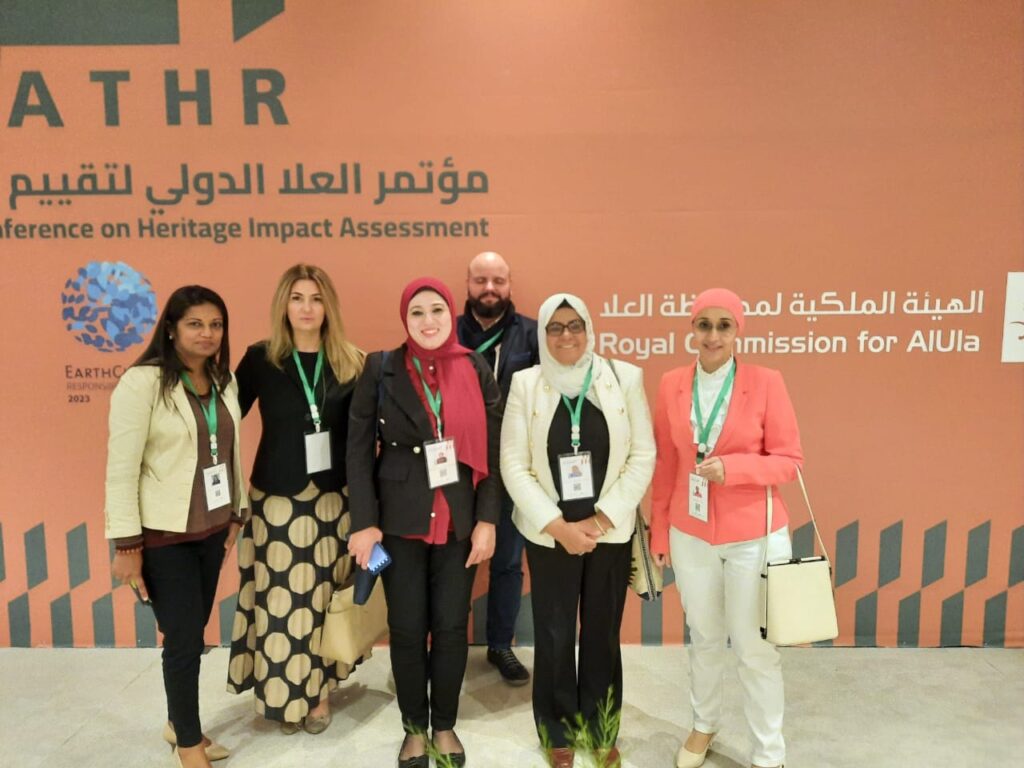ALULA International Conference on Heritage Impact Assessment
Written by Dr Shreen Amin, Curator, Museologist and Heritage Professional, Egyptian Museum, Cairo, and visiting professor at Helwan University Egypt (ITP 2016)
Dear Colleagues,
I am writing to share with you some exciting news. I have participated in the ALULA International Conference on Heritage Impact Assessment (HIA) which was held in Alula, Saudi Arabia, from December 3rd to 6th 2023.
The conference was organized by the Royal Commission for AlUla in partnership with the International Union for Conservation of Nature (IUCN), the International Council on Monuments and Sites (ICOMOS), the ICCROM Sharjah Regional Office, and UNESCO’s Regional Office.
The conference was held at Maraya Hall in AlUla for four consecutive days. Maraya is a stunning, mirrored building located in the desert canyon of the Ashar Valley. The structure itself is a work of art.

Read more about research on Heritage Impact Assessment HERE.
Impact assessment is a process that requires thought before action. Effective impact assessment requires a comprehensive strategy that considers multiple dimensions and incorporates stakeholders to ensure the conservation and enhancement of the environment for heritage sites. UNESCO and the advisory bodies to the World Heritage Committee have issued new guidance for assessing impacts from projects that could potentially affect heritage sites. World heritage sites have been facing increasing pressure from various forms of development in recent years, including urbanization, tourism infrastructures, dams, roads, power plants and other major interventions, find more information HERE.
I had the honor of meeting Prof. Dr. Mona Fauad; Professor of Conservation, Faculty of Archaeology, Cairo University, read more about her recent research HERE.
And Ms. Shimaa Shaheen, Director of the Tarek Walley Centre Architecture and Heritage, who presented an informative paper about heritage impact assessment and challenges of legislative frameworks for Egyptian historical cities.
Read more about the conference and the topics discussed HERE.
I also experienced AlUla’s extraordinary heritage sites, read more HERE. One of the most important heritage sites I visited and that had an impact on me was the Al-Hijr archaeological site (Mada’in Salih), 22 kilometers to the north of AlUla in the Kingdom of Saudi Arabia. It is the first site to be included in the World Heritage List of UNESCO. Because of its location on the ancient trade route connecting southern Arabia and Syria, Al-Hijr has historical significance. Previously known as Al-Hijra, Al-Hijr is the largest conserved site of Nabataean civilization south of Petra in Jordan. It is 500 kilometers south-west of Petra and one of the archaeological sites that can be considered an open museum, with a total area of 13.39 kilometers. The site contains massive, well-preserved tombs with ornate facades dating back to the first century AD. The site also has over 50 pre-Nabataean inscriptions as well as numerous cave artworks. The Al-Hijr site is a one-of-a-kind testimony to Nabataean culture. Its massive 111 tombs, 94 of which are adorned, and water wells are outstanding examples of Nabataean architectural accomplishments and hydrological expertise.
A special thanks goes to the conference organizer.
My special appreciation goes to the British Museum ITP, which encourages us to move forward and share our thoughts and successes.
Shreen
